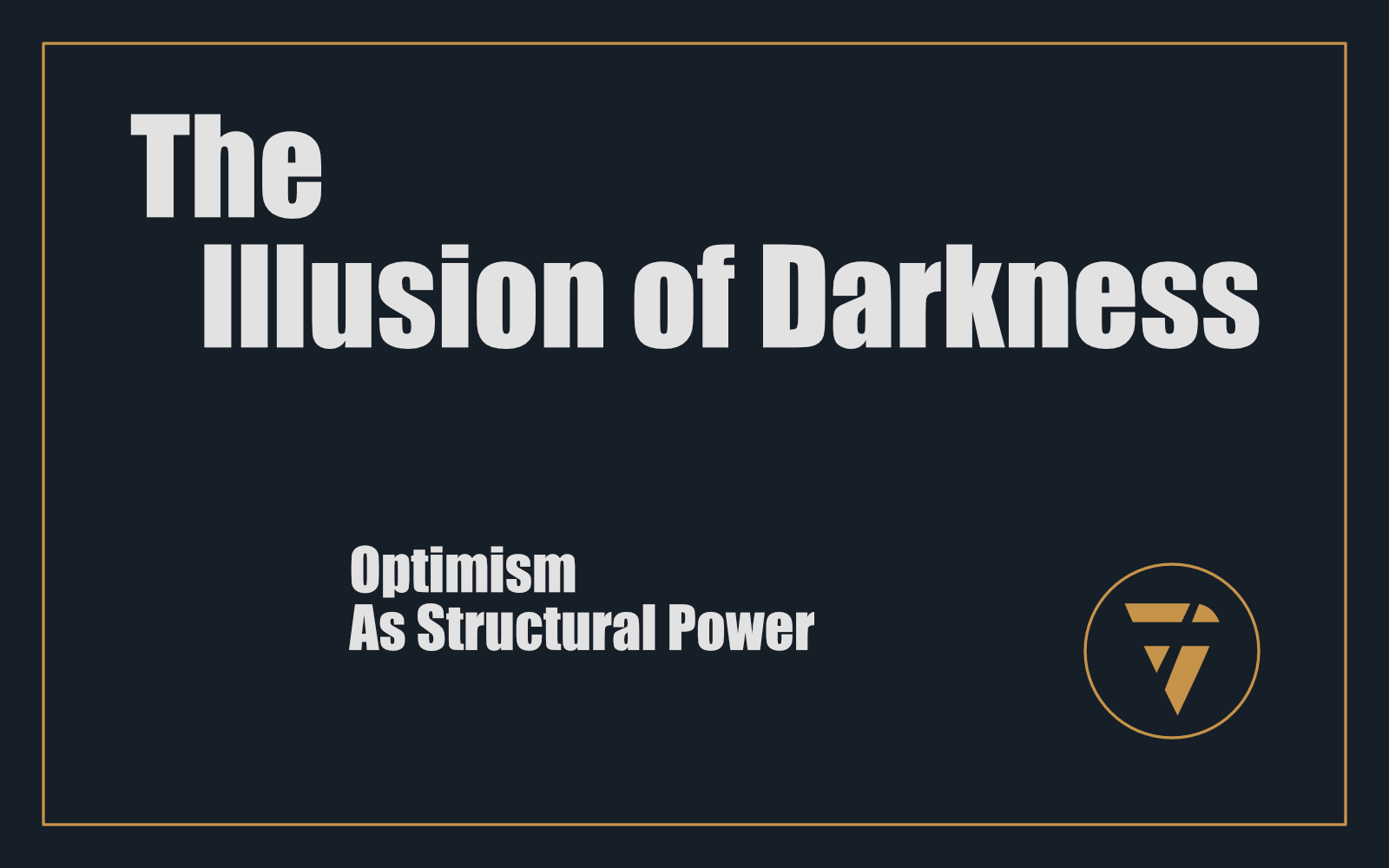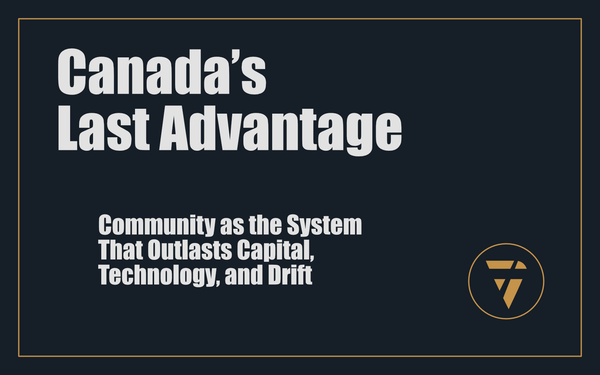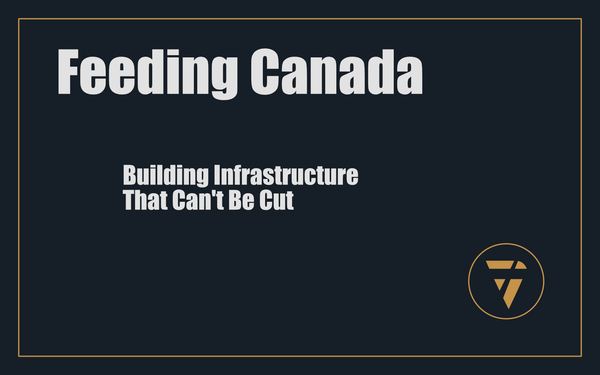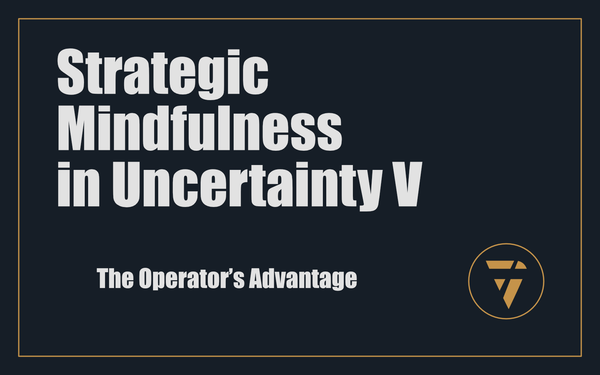The Illusion of Darkness

Optimism As Structural Power
We are surrounded by systems that fail visibly—political chaos, ecological breakdown, financial distortion, social decay. The instinct is despair. The mind whispers: “It’s all over.” But despair is the easiest option. It requires no discipline, no imagination, no creation. It's surrender disguised as realism.
Optimism, then, is not blindness to suffering. It's clarity that suffering itself is built on choices—ideas repeated, systems installed, architectures left unchallenged. If collapse is a set of decisions, then rebirth can be, too. This is the heart of sovereignty: recognising that decline is engineered, and therefore so is renewal.
Where Optimism Lives
Optimism is often misframed as emotion. That's why it collapses under scrutiny. But optimism is not feeling—it's positioning. It lives in three specific places:
- Narrative Control
Whoever owns the story owns the motion. Optimism is choosing to tell a future-forward story when decay demands you retell the past. It's deciding the narrative does not belong to governments, media cycles, or legacy systems. It belongs to builders. - Structural Installation
Optimism without structure is hallucination. But when optimism is paired with systems—capital design, revenue engines, operational compression—it converts. You do not “hope” a business thrives. You install architecture that makes its thriving inevitable. - Relational Leverage
Optimism is amplified by proximity. Alone, you can only hold so much belief. In aligned networks—partners, operators, investors—the belief compounds into shared infrastructure. Optimism is not yours to carry alone. It's designed to be multiplied.
Optimism as Defiance
Building in spite of collapse is not delusion. It's defiance. You are not ignoring the fire—you are choosing to start building again while you watch it burn. Optimism is not pretending there is no enemy; it's proving the enemy is irrelevant.
Dark times demand new systems:
- Funding innovation beyond legacy control.
- Replacing extractive capitalism.
- Leverage as the hidden law beneath every competitive system.
- Operators stepping out of broken hierarchies to architect new models.
This is optimism in its sharpest form: to accept reality, then refuse its terms.
The Cost of Inaction
If you abandon optimism, you inherit drift. Drift is worse than despair because it looks like work. You still post. You still meet. You still grind. But you are not building, you are circling. Without optimism as your anchor, everything becomes reactive. You live inside someone else’s story. You work on someone else’s system. You become labour for a machine that pays you in distraction.
The cost is not only yours. When optimism collapses, the next generation inherits a deficit of vision. They grow up believing that smallness is survival, that systems cannot be changed, that their role is maintenance, not creation. This is how empires rot—not because enemies destroy them, but because optimism was surrendered first.
Sovereign Optimism
True optimism is sovereign. It's not dependent on trend, approval, or conditions. It isn't fragile, because it's built on consequence.
- In capital: You design new ways of raising and distributing funds that outpace old systems.
- In operations: You compress cycles, delete effort, and install systems that scale without you.
- In economics: You move toward models that re-engineer fairness and growth simultaneously.
- In leadership: You choose mindfulness as presence, not passivity.
Sovereign optimism says: “I will architect the conditions under which my vision survives, regardless of collapse around me.”
The Deployment Path
So what do you do with optimism? You weaponise it.
- Name the Decay
Do not deny the darkness. Name it, expose it, and strip it of mystique. Decay is only strong when it's left vague. Once you articulate its mechanics, you can dismantle them. - Install New Systems
Optimism becomes durable only when translated into architecture—funding systems, operational engines, narrative weapons. Turning clarity into consequence. - Multiply Through Partners
Optimism must not stay singular. Share it with those who have capital, reach, or infrastructure. Partnership transforms hope into scale. - Anchor in Leverage
At every step, measure your optimism by its yield. Is it compressing time? Multiplying capital? Expanding trust? If not, it's fantasy. If yes, it's leverage. And leveraged optimism is unstoppable.
The Consequence
Optimism is not light in darkness. It's ignition. It sets fire to the very structures that claimed permanence. And when you carry it as architecture, not sentiment, you no longer “feel hopeful.” You become dangerous. Because you cannot be persuaded back into drift, fear, or obedience.
That is what to do with optimism: protect it, sharpen it, install it, and multiply it. Build with it as your silent engine. Carry it like steel, not sugar. Use it to replace systems, not soften them.
Because in the end—collapse is only proof that your optimism was necessary.
This is what I’m working on. Tell me what you think, I enjoy the conversation! Subscribe and follow the work in real time.
Thanks!
B

Decay isn’t destiny.
Collapse is just architecture left unchallenged.
Optimism isn’t hope. It’s defiance, with structure.
PS -

The Architecture of Optimism
Optimism is not sentiment. It's not “good vibes,” “positive thinking,” or the shallow promise of a better tomorrow. In sovereign work, optimism is structural. It's the engine beneath all forward motion.
Most people misunderstand it. They mistake optimism for emotion, and emotion for strategy. That’s why they collapse under the weight of dark times. Optimism without architecture is hallucination. Optimism with architecture is defiance.
1. Optimism Is Positioning
The world is not neutral. It's contested ground — by markets, by politics, by collapsing systems, by emergent networks. If you surrender optimism, you surrender position. You allow legacy narratives to define your horizon.
But when you choose optimism, you seize narrative ground. You say: “I will not be trapped inside the story of decline.”
Position is leverage. The operator who claims optimism as position holds the sharpest asymmetry: while others explain why it won’t work, you are quietly installing systems that make it inevitable.
2. Optimism as Structure
If you cannot build it into system, it does not exist.
Optimism only survives when translated into structure:
- Capital design that doesn’t beg legacy control for permission.
- Profit models that outgrow extractive capitalism and build equitable engines.
- Operational compression that deletes drift and converts motion into yield.
- Leverage installs that make your optimism compounding, not fragile.
Hope is fragile because it relies on mood. Structure is permanent because it produces motion, regardless of mood.
3. Optimism as Defiance
You don't build because conditions are right. You build because collapse proves the old conditions were rotten.
Optimism is not “it will all be okay.” Optimism is: “This fire is my proof. Their system is burning. That means it’s my time to install.”
It’s defiance against drift. Drift is what happens when you keep working, but on someone else’s terms. Drift is despair in disguise — motion without consequence. Optimism kills drift because it refuses to accept someone else’s architecture as inevitable.
4. Optimism Multiplied
Alone, optimism is fragile. Together, optimism is infrastructure.
This is why sovereign builders use partnerships. Your optimism, connected with another’s capital, distribution, or network, compounds into structural inevitability.
Relational leverage weaponises optimism. When multiple operators defy collapse in concert, it ceases to be belief. It becomes market gravity.
5. The Cost of Abandoning Optimism
Without optimism, you inherit despair. But worse — you inherit drift.
- You keep “working,” but not building.
- You keep “posting,” but not converting.
- You keep “networking,” but not compounding.
Without optimism, you are labour inside someone else’s failing system. Your creativity becomes fuel for their decay. The cost is not just yours — it's inherited by the next generation, who learn to shrink, not to build.
6. Deploying Sovereign Optimism
To weaponise optimism, install it like this:
- Name the decay. Stop treating collapse like mystery. Identify its mechanics. Strip it of mystique.
- Install a counter-system. Don’t wait for permission. Drop architecture that works — funding, leverage, partnerships, new economics.
- Multiply the motion. Anchor your optimism in others who carry structural assets. Partnership turns optimism into inevitability.
- Audit for leverage. If your optimism doesn’t compress time, multiply capital, or weaponise trust, it’s fantasy. Optimism must yield.
The Sovereign Truth
Optimism is not hope. It's ignition. It's what sets fire to the lie that “this is the way things are.”
When you carry optimism as steel, not sugar — as system, not sentiment — you become dangerous. You cannot be persuaded back into drift, despair, or obedience. You are no longer building in spite of collapse. You are building because collapse is your proof that the time is now.
Your Lever
Find one area of your life or business where you surrendered optimism and called it “realism.” Write it down. Then ask: what structure, if installed, would make optimism compounding here? That is your next build.






